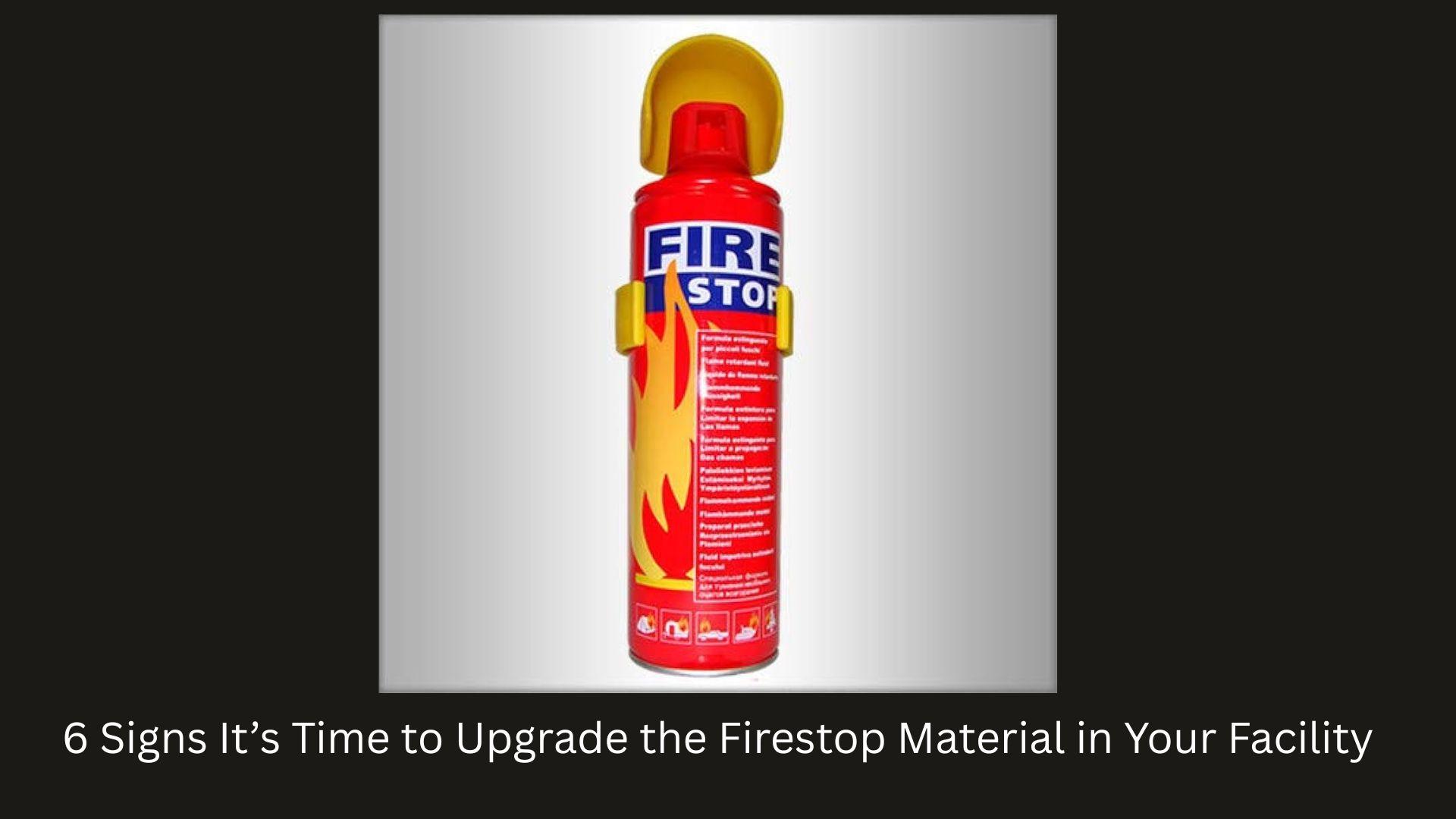Introduction: When “Safe Enough” Isn’t Really Safe
You know that quiet sense of comfort you get when you think your building’s safety systems are in place? Fire alarms tested, sprinklers functional, exit routes clear. But here’s the uncomfortable truth — even if you’ve done all that, your walls and ceilings might still not be truly fire-safe. The unseen layer that seals gaps and prevents fire from spreading — your firestop material — could be past its prime.
Most building owners or facility managers assume fire protection systems last forever. The reality is, like any other safety element, these materials age, degrade, and can become ineffective. And when they do, they silently put lives, property, and compliance at risk.
In this guide, we’ll explore six clear signs that tell you it’s time to upgrade, repair, or replace your existing firestopping system — before a small oversight becomes a serious hazard.
1. Your Building Has Undergone Major Renovations
One of the most overlooked red flags appears right after a remodel. When new cables, pipes, or ducts are added, they often penetrate existing walls and floors. If the old sealant or system isn’t replaced or properly reapplied around those new openings, fire can spread unchecked through those gaps.
Even the best contractors sometimes assume existing firestopping will hold up — but that assumption can be dangerous. Each new penetration changes the performance of your entire compartmentation system.
Here’s what to do:
-
After every renovation or retrofitting project, schedule a full inspection of fire-rated walls and barriers.
-
Document all new penetrations and confirm they’ve been resealed with the correct materials and ratings.
It’s not about adding more product — it’s about ensuring continuity.
2. The Existing Seals Show Visible Wear or Damage
Walk through your mechanical rooms or ceiling spaces and take a closer look at your penetrations. If you see cracking, crumbling, discoloration, or shrinkage around cable bundles or joints, it’s time to act.
Firestop systems depend on adhesion and expansion under high heat. When they’re damaged or deteriorating, they lose that ability. Think of it like a seatbelt that’s frayed — it might look fine at a glance, but it won’t perform when you need it most.
Common culprits:
-
Constant vibration near HVAC or machinery
-
Exposure to moisture or extreme temperature changes
-
Accidental damage during maintenance
Replacing worn-out sections not only restores fire resistance but also ensures compliance with local codes and insurance standards.
3. Your System Doesn’t Match the Current Building Codes
Fire safety regulations evolve — often because of lessons learned from real-world incidents. What met the standards a decade ago might not even pass inspection today.
Many older facilities still rely on outdated products or techniques that don’t meet modern performance tests. For instance, some older sealants were rated for smaller penetrations or shorter fire durations.
You’ll want to:
-
Review the latest fire code requirements (UAE Fire and Life Safety Code of Practice is a good start).
-
Have a certified fire engineer or inspector assess your current systems for compliance gaps.
-
Upgrade to tested, certified systems that match your current occupancy type and configuration.
It’s not just about passing an audit — it’s about ensuring your fire barriers perform exactly as expected when conditions turn critical.
4. You’ve Noticed Inconsistent Product Labels or Documentation
If your facility’s firestop records are incomplete or if products on-site aren’t clearly labeled, that’s a problem. Every rated seal or barrier should have documentation showing what system was used, where it was applied, and how it was tested.
Inconsistent labeling, mixed brands, or missing system IDs often mean previous contractors used whatever was available — not necessarily what was approved. That inconsistency can void compliance and compromise performance.
Here’s a quick tip:
-
Cross-check every visible firestop system against your drawings or inspection reports.
-
Re-mark or replace unidentified materials with properly documented, tested systems.
A lack of traceability isn’t just an administrative headache — it’s a safety blind spot.
5. Maintenance Teams Keep Disturbing Existing Firestops
Here’s the thing — maintenance teams rarely think about fire barriers. When IT installs new cables or electricians reroute conduits, those penetrations often get widened or re-sealed on the fly with whatever’s at hand.
Over time, these “quick fixes” pile up. The result? A patchwork of mixed materials, air gaps, and under-tested solutions that no longer work together as a system.
How to prevent it:
-
Train your maintenance teams to recognize and report disturbed firestop areas.
-
Establish a re-sealing protocol for any new penetrations.
-
Keep a consistent record of all maintenance affecting fire-rated walls.
Firestopping isn’t a one-time project — it’s an ongoing discipline that keeps your facility’s safety intact.
6. You’re Using Products That Are No Longer Certified
Manufacturers occasionally reformulate or discontinue older lines of sealants, wraps, and collars. If you’re still using those legacy materials, they may no longer be covered by current certification listings or standards.
Why does this matter? Because in the event of a fire, uncertified materials can’t guarantee performance — and your insurer or authority might not recognize them as compliant systems.
Here’s what to do:
-
Contact your supplier for an updated list of approved systems.
-
Replace outdated or uncertified materials during scheduled maintenance or retrofits.
-
Choose suppliers that provide full traceability and certification documentation.
Working with trusted experts ensures that your upgrades actually improve safety, not just appearance.
Choosing the Right Partner for Your Upgrade
If this all sounds like a lot to track — you’re not wrong. Upgrading fire protection systems is as much about expertise as it is about materials. The right supplier or consultant won’t just sell you a product; they’ll help you design, document, and maintain a compliant system.
Reputable specialists understand how to match sealant types to specific wall constructions, ensure installation methods meet test standards, and maintain proper labeling and documentation. For building owners working with firestop material, these partners are the difference between “compliant on paper” and genuinely protected in practice.
A Quick Recap of the 6 Signs
Here’s what to keep an eye out for:
-
You’ve had recent renovations or new penetrations.
-
The seals are cracked, brittle, or discolored.
-
Your firestop systems don’t meet the latest building codes.
-
Labels or documentation are missing or inconsistent.
-
Maintenance work keeps disturbing sealed areas.
-
You’re using outdated or uncertified products.
If any of these ring true for your facility, it’s time to act.
Conclusion: Safety Isn’t Static
Fire protection is one of those things that quietly fades into the background — until it’s too late. But upgrading your systems doesn’t have to be overwhelming. Start with a simple inspection, document what’s in place, and bring in professionals who specialize in code-compliant solutions.
Whether you’re managing a hospital, data center, or residential tower, your fire barriers are the silent guardians of every space. And maintaining them is an ongoing responsibility, not a one-time investment.
By paying attention to these warning signs and upgrading your firestop material when needed, you’re not just meeting a regulation — you’re protecting people, assets, and trust.
FAQs About Firestop Systems
1. How often should firestop systems be inspected?
Ideally, at least once a year — or immediately after any major renovation or maintenance work that affects fire-rated barriers.
2. Can I reapply new firestop material over old sealant?
It’s not recommended. The new material might not bond or expand properly. Always remove old or damaged material before reinstalling.
3. Are all firestop materials the same?
No. Different applications (cables, pipes, joints) require different products — intumescent sealants, wraps, foams, or mortars — tested for specific scenarios.
4. What certifications should I look for?
Check for internationally recognized standards such as UL, ASTM, or EN fire ratings, along with manufacturer documentation specific to each system.
5. Who should handle firestop inspections?
Qualified professionals or certified inspectors familiar with passive fire protection systems.



